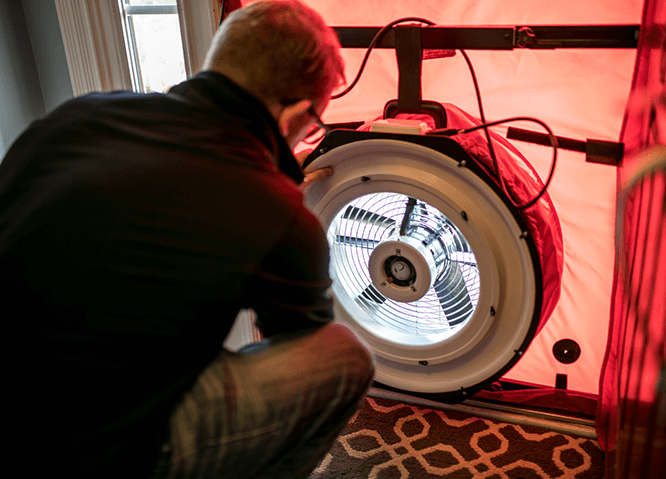A blower door is a useful tool to analyze and diagnose energy loss in a building. It consists of a powerful fan that mounts into the frame of a doorway to the exterior of your home. Once the fan is turned on you will be able to measure the amount of air leaving the home in Cubic Feet per Minute (CFM). A qualified energy professional can calculate the specific target CFM for your house.
Through our blower door tests, you will be able to physically feel the air coming through any gaps in the exterior envelope of the house. You can even feel the air with your hands while the fan is moving.
Our team will use the fan to discover weak spots in your building envelope and get a baseline for any repairs that need to be made.

Your home energy professional will perform the blower door test, including a walk-through of your home, setting up the blower door, and conducting the test. The following steps will help prepare your home for a blower door test: